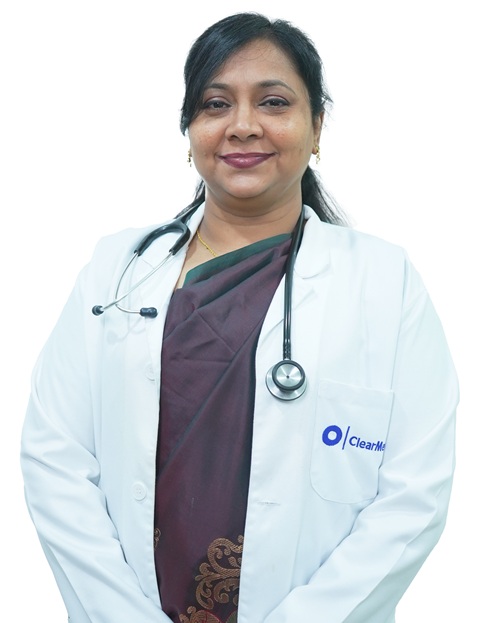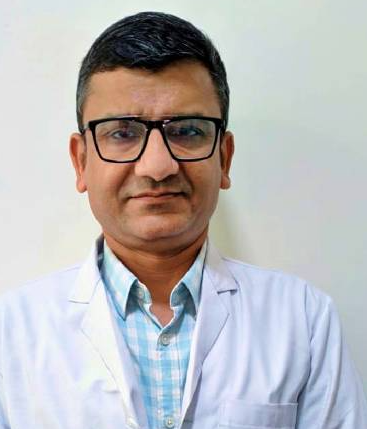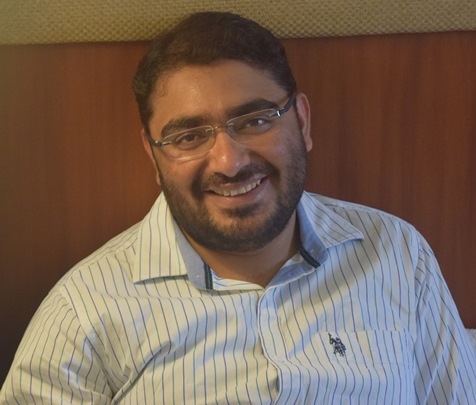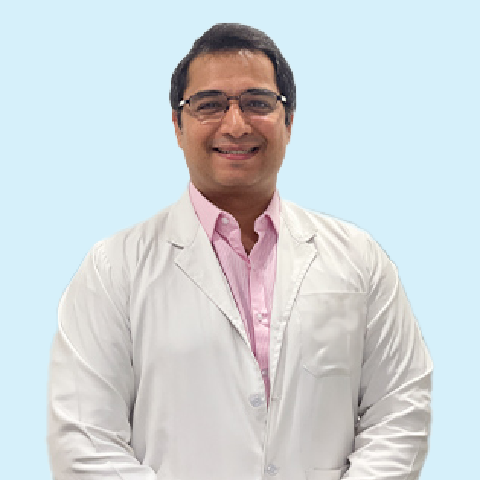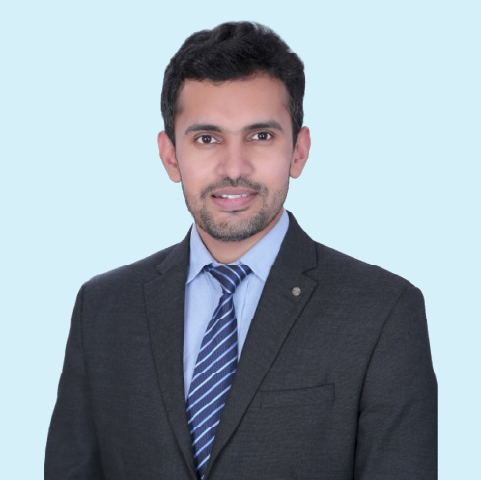Buccal Fat Removal - Procedure, Before & After Pics, Recovery

Treatment Duration
25 Minutes
------ To ------40 Minutes
Treatment Cost
₹ 20,000
------ To ------₹ 60,000

Table of Contents
- What is Buccal Fat Pad Surgery?
- Conditions treated with Buccal Fat Removal
- How is Buccal Fat Removal performed?
- What to expect before and on the day of the surgery?
- What to expect after the Buccal Fat Removal Surgery?
- Benefits of the Surgery
- Risks and Complications of Buccal Fat Removal Surgery
- Risks of Delayed Surgery
- Cost of the Surgery
- Takeaway
Buccal fat is fat between the jaw bones and cheekbones of the face. These fat pads help make up the shape of your face. Buccal fat removal is a surgery to remove the fat in this area of your face. Also known as cheek fat removal surgery, it highlights the bone structure in your face, especially the cheekbones and the hollowed-out areas between your cheeks and jawline.
| Procedure Name |
Buccal Fat Removal |
| Alternative Name |
Cheek reduction, Buccal Lipectomy, Face Fat Removal |
|
Benefits of Surgery |
Improved facial contour, Enhanced facial appearance, Long-lasting results |
|
Treated By |
Plastic Surgeon |
You can check Buccal Fat Removal (Buccal Lipectomy) Cost here.
What is Buccal Fat Pad Surgery?
Buccal fat removal is a cosmetic surgery procedure involving removing excess fat from the cheeks to create a more chiselled and defined facial appearance. The procedure is usually done on an outpatient basis and can be performed under local anaesthesia.
The procedure involves making small incisions inside the mouth, and then removing a portion of the buccal fat pads. The amount of fat removed depends on the desired outcome and the patient's facial anatomy.
Anatomy of Buccal Area
The buccal area refers to the cheek area of the face. The anatomy of the buccal area includes several vital structures including:
- Skin: It is thin and delicate, making it vulnerable to damage from external factors.
- Subcutaneous fat: Present in the buccal area, contributes to the fullness and roundness of the cheeks.
- Buccal fat pad: This pad is a significant mass of fat located in the cheek area that serves various functions.
- Orbicularis oris muscles: Several muscles are present in the buccal area, including the buccinator and orbicularis oris muscles, which are crucial for facial expressions and movement.
- Nerves: The buccal area is supplied with blood by the facial artery and vein, and the facial nerve innervates it, making it a vital part of the facial anatomy.
- Parotid salivary gland: This gland present in buccal area is responsible for producing saliva.
- Teeth: In addition to the salivary gland, the upper and lower molars, responsible for grinding and crushing food, are located in the buccal area.
- Gums: The gums, soft tissues surrounding the teeth, are important for maintaining oral health.
Expert Doctors (10)
NABH Accredited Hospitals (10)


Conditions treated with Buccal Fat Removal
It is primarily performed for aesthetic reasons, rather than for medical reasons. Here are some of the conditions that can be treated with buccal fat removal:
- Round or chubby cheeks: Buccal fat removal is most commonly performed to reduce the appearance of fullness in the cheeks, which can create a rounded or chubby appearance.
- Lack of facial definition: People who have excess fat in their cheeks may lack definition in their facial features, which can make their face appear less angular and sculpted.
- Disproportionate facial features: In some cases, the cheeks may appear disproportionately large in relation to other facial features, which can make the face appear unbalanced.
- Aging: As people age, their cheeks can lose volume and sag, which can make them appear older. Buccal fat removal can help restore a more youthful, refreshed appearance.
Who needs Buccal Fat Removal?
There may be various reasons for undergoing a buccal fat removal surgery, but the candidate should meet the following criteria before undergoing the surgery:
- Be in good overall health
- People who have excess fat in the cheek area that they would like to remove.
- Candidates should have fully developed facial bones and muscles, which typically occurs in the late teenage years or early adulthood.
- Be motivated to improve their appearance
How is Buccal Fat Removal performed?
The following section will provide an overview of how buccal fat removal is typically performed, including the different techniques used and what patients can expect during the procedure.
- Anaesthesia: The procedure is typically performed under local anaesthesia, numbing the treated area. This allows the patient to remain awake during the procedure but feel no pain.
- Incision: The surgeon makes small incisions inside the cheek, near the back molars. These incisions are usually about 1 to 2 cm long and are placed in the natural folds of the cheek to minimise scarring.
- Removal of excess fat: The surgeon accesses the buccal fat pad through the incisions and removes the excess fat using specialised instruments.
- Closure of incisions: Once the excess fat has been removed, the incisions are closed with suture.
- Recovery: After the procedure, the patient may experience swelling and bruising in the cheek area, which should resolve within a few weeks. The patient will be given postoperative instructions, including how to care for the incisions and manage any discomfort.
What to expect before and on the day of the surgery?
Preparing for surgery can be a stressful experience, but understanding what to expect before and on the day of the procedure can help alleviate some of that anxiety. Before undergoing any surgery, it is essential to follow your surgeon's instructions carefully to ensure the best possible outcome. The following section will provide an overview of what to expect in the lead-up to buccal fat removal surgery and on the day of the procedure.
Before the Surgery
Before undergoing buccal fat removal surgery, discussing your goals and expectations with a qualified plastic surgeon is important. They will also explain the potential risks and complications of the procedure and help you understand what to expect during and after the surgery.
Here are some general things you can expect before a buccal fat removal surgery:
- Preoperative evaluation: The surgeon will perform a thorough assessment to determine whether you are a good candidate for the procedure. This includes taking a medical history, performing a physical examination, and ordering additional tests or imaging studies.
- Preoperative instructions: The surgeon will provide specific instructions to follow before the surgery, such as avoiding certain medications, eating or drinking for a certain period before the procedure, and avoiding smoking.
- Anaesthesia: The procedure is typically performed under local anaesthesia, numbing the treated area. The surgeon will discuss the type of anaesthesia used and any potential risks or side effects.
- Preoperative consent: The surgeon will provide you with information about the procedure and any potential risks and complications, and they will ask you to sign a consent form indicating that you understand and accept the procedure's risks.
On the Day of the Surgery
On the day of buccal fat removal surgery, you can expect the following before the actual surgery:
- Arrival at the surgical facility: You will need to arrive at the surgical facility at the designated time, which will be determined by your surgeon. You will likely be asked to provide identification and insurance information.
- Preoperative preparation: You will be asked to change into a surgical gown and may be asked to remove any jewellery or other personal items. Your vital signs, such as blood pressure and heart rate, will be monitored.
- Anesthesia: If you have local anaesthesia, you will be awake during the procedure but not feel any pain. If you have general anaesthesia, you will fall asleep during the procedure. The anesthesiologist will discuss the specifics of the anaesthesia with you before the surgery.
- Meeting with the surgeon: You will meet with the surgeon before the procedure to discuss the surgery's details and ask any final questions you may have.
- Photos: The surgeon may take pictures of your face before the procedure to document your appearance and to use as a reference during the surgery.
What to expect after the Buccal Fat Removal Surgery?
After undergoing buccal fat removal surgery, it is crucial to prioritise post-operative care to support proper healing and reduce the risk of complications.
Recovery in the Hospital
- After the procedure, you will be taken to a recovery area where you will be closely monitored until you are fully awake and stable.
- You may experience some discomfort, but your surgeon will prescribe pain medication to help manage it.
- During this time, you will likely experience swelling and bruising in the cheek area, which is a common side effect of the procedure.
- The nursing staff will provide specific instructions on managing the swelling and bruising.
Discharge Instructions
- Your surgeon will provide specific instructions for your recovery, including how to care for the incisions, what activities to avoid, and when to follow up with the surgeon.
- You may be given antibiotics and pain medication to take at home. It is essential to carefully follow your surgeon's instructions to ensure the best possible outcome.
Recovery at Home
- During the recovery period at home, it is essential to prioritize rest and follow your surgeon's post-operative instructions carefully.
- Your surgeon will provide specific instructions on managing the swelling and bruising, such as using ice packs and elevating your head while sleeping.
- You may experience some discomfort, but it is essential to take the medicine as prescribed and to report any persistent or severe pain to your surgeon.
- You should avoid strenuous exercise and any activities that could cause trauma to the face for at least two weeks.
- Your surgeon will provide specific instructions on when you can return to your normal activities, including work or school.
- Follow-up appointments will be scheduled to monitor your progress and ensure proper healing.
First Follow up appointment
The first follow-up appointment after a buccal fat removal surgery is typically scheduled within the first week after the procedure. During this appointment, the surgeon will assess your recovery and check the incisions to ensure they are healing correctly. They may also remove any sutures or staples used to close the incisions.
Here are some other things you can expect during the first follow-up appointment after a buccal fat removal surgery:
- Assessment of recovery: The surgeon will assess your recovery and check for any signs of infection or other complications. They will also check the incisions to ensure that they are healing correctly.
- Removing sutures or staples: If sutures or staples were used to close the incisions, the surgeon will remove them during this appointment.
- Reviewing postoperative instructions: The surgeon will examine the instructions with you and answer any questions.
- Discussing the results: The surgeon will discuss the procedure's results with you and help you understand what to expect during recovery.
Benefits of the Surgery
It is important to note that the benefits of buccal fat removal may vary from person to person and that the procedure may only achieve the desired results in some cases.
Some potential benefits of buccal fat removal surgery include:
- Improved facial contour: By removing excess fat from the cheeks, buccal fat removal can create a more defined and chiselled facial contour.
- Enhanced facial appearance: Many people feel more confident and satisfied with their appearance after undergoing buccal fat removal.
- Reduced fullness in the cheeks: If you are unhappy with the fullness or roundness of your cheeks, buccal fat removal can help reduce this fullness and create a more balanced and harmonious facial appearance.
- Long-lasting results: The results of buccal fat removal are typically long-lasting, although the fat may return over time if the patient gains weight.
Risks and Complications of Buccal Fat Removal Surgery
As with any surgical procedure, buccal fat removal may have potential risks and complications. Some potential risks and complications of buccal fat removal surgery include:
- Anaesthesia risks: There are always risks associated with anaesthesia, such as allergic reactions, breathing problems, or heart complications.
- Bleeding: Excessive bleeding during or after the surgery may require additional treatment or surgery.
- Asymmetry: The removal of too much or too little fat can cause facial asymmetry, which may require further treatment.
- Infection: Infection is a possible risk of any surgical procedure, and may require additional treatment with antibiotics.
- Scarring: Incisions made during the procedure may result in visible scarring, although these are typically small and hidden within the mouth.
- Numbness: The procedure may cause temporary or permanent numbness in the cheeks, which may affect sensation and function.
- Changes in facial expression: In rare cases, the removal of buccal fat may cause changes in facial expression, such as difficulty smiling or closing the eyes fully.
When to consult a Doctor?
It is essential to consult with the doctor if you experience any of the following symptoms after the surgery:
- Persistent or severe pain: If you experience persistent or severe pain after the surgery, it is important to consult with the doctor. They may need to adjust your pain management plan or investigate the cause of the pain.
- Infection or other complications: If you develop any signs of infection or other complications after the surgery, such as fever, redness or drainage at the incision site, or difficulty breathing, it is essential to consult the doctor immediately.
- Unusual symptoms: If you experience any unusual symptoms after the surgery, such as difficulty swallowing, speaking, or vision changes, it is essential to consult the doctor.
Risks of Delayed Surgery
The following outcomes can be expected if surgery is delayed:
- Less aesthetic appearance
- Hypertrophy (increase in the size of the cells) of the buccal fat pad
- Cheek/midface fullness
- A lesser striking look on your face
- Herniation (abnormal protrusion of a tissue through an opening) of the buccal fat pad.
Cost of the Surgery
The cost of a buccal fat removal surgery in India can vary widely depending on a number of factors, including the specific technique used, the location of the practice, the experience and qualifications of the surgeon, and the complexity of the case.
On average, the cost of a buccal fat removal surgery in India can range from Rs. 20,000 to Rs. 60,000. However, it is important to note that this is just a general estimate and the actual cost may be higher or lower depending on the specific circumstances.
|
Procedure Name |
Cost Value |
|
Buccal fat removal surgery |
Rs.20,000 to Rs. 60,000 |
Takeaway
In conclusion, buccal fat removal surgery is a cosmetic procedure that involves removing excess fat from the cheeks to create a more defined facial appearance. It is typically recommended for individuals who are bothered by their overly round or chubby cheeks and desire a slimmer, more sculpted look.
It is therefore important to carefully consider the risks and benefits of the procedure and to choose a qualified and experienced surgeon who can provide appropriate pre- and post-operative care. You can contact the experts at HexaHealth if you want to undergo a buccal fat removal surgery. The experts here will guide you through the best treatment options possible.
Frequently Asked Questions (FAQ)
How will I look after buccal fat removal?
After buccal fat removal, your face may appear slimmer and more contoured, with less fullness in the cheeks. However, the final results can vary depending on the individual's natural facial structure, the amount of fat removed, and the surgeon's technique.
How long does it take to recover from face fat removal?
Recovery time after buccal fat removal can vary depending on the individual, but typically takes around one to two weeks. Swelling and bruising are common during the first few days, and patients may need to follow certain post-operative care instructions to ensure proper healing.
Does buccal fat removal change your face shape?
Yes, buccal fat removal can change the shape of your face by reducing fullness in the cheeks and creating a more defined look. However, the extent of the change will depend on the individual's facial anatomy and the amount of fat removed.
Does buccal fat removal affect smile?
In some cases, buccal fat removal may affect smile function temporarily. However, this is usually a minor issue and tends to resolve on its own as the healing process progresses.
Do you need stitches after cheek fat removal?
Yes, stitches are typically used to close the incisions made during buccal fat removal. The number and type of stitches used may vary depending on the surgeon's technique and the individual's needs.
Does buccal fat grow back?
Buccal fat removal is designed to permanently remove excess fat from the cheeks. However, it is possible for new fat deposits to form in the treated area over time, particularly if the patient experiences significant weight gain.
Can buccal fat removal go wrong?
Like any surgical procedure, buccal fat removal does carry some risks and potential complications. These can include infection, bleeding, asymmetry, nerve damage, and unsatisfactory results. It is important to choose a qualified and experienced surgeon to minimise the risk of complications.
How to do buccal fat removal naturally?
There is no proven way to naturally reduce the amount of fat in the cheeks. Maintaining a healthy diet and exercise routine can help to reduce overall body fat, but may not specifically target fat in the face.
Does buccal fat cause double chin?
Can buccal fat removal give you hollow cheeks?
In some cases, buccal fat removal may result in a hollow or sunken appearance in the cheeks. This can occur if too much fat is removed or if the individual has a naturally thin or narrow face. It is important to choose a skilled surgeon who can customise the procedure to each patient's individual needs and goals.
Last Updated on: 18 February 2023
Author
HexaHealth Care Team
HexaHealth Care Team brings you medical content covering many important conditions, procedures falling under different medical specialities. The content published is thoroughly reviewed by our panel of qualified doctors for its accuracy and relevance.
Other Treatments in Your City





